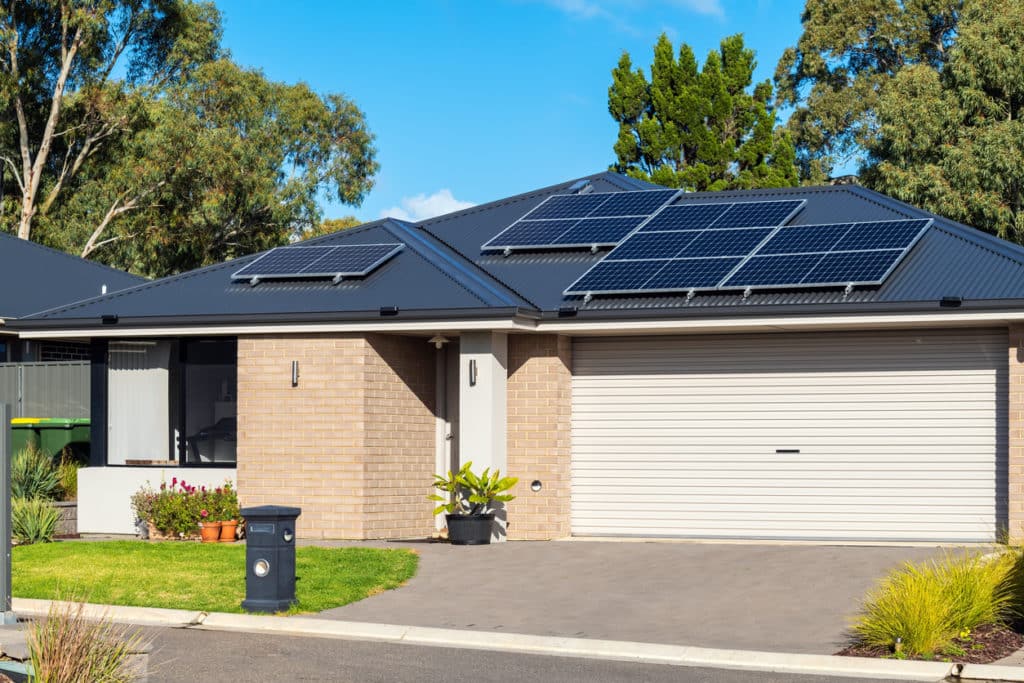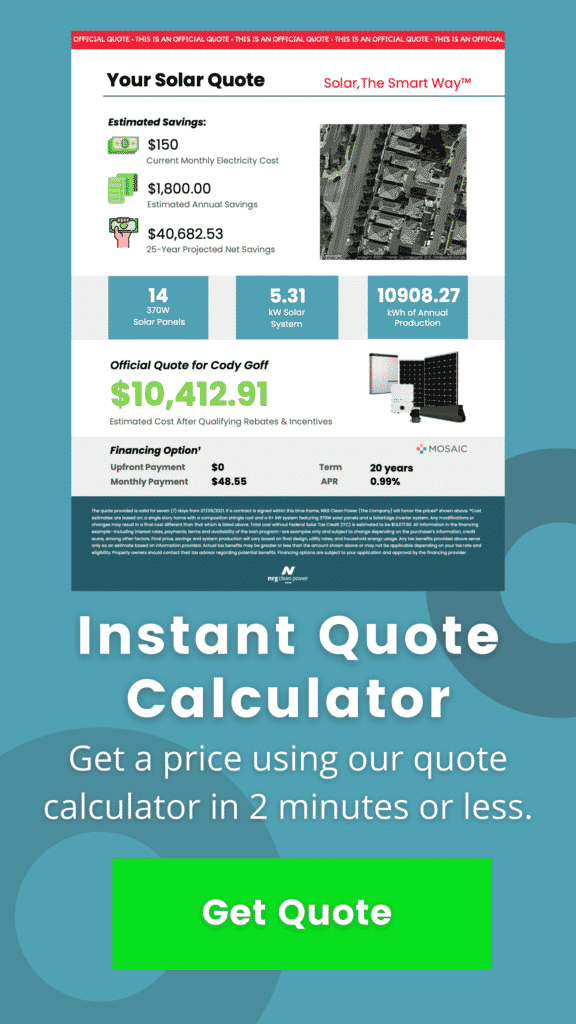
Installing solar panels on your roof can provide you with a cheaper source of electricity than that offered by your existing electricity company. But homeowners often find themselves at a loss as to the ideal number of solar panels they would need.
Many factors contribute to the question of how many solar panels do you need. The square footage of your home is only one of those. And even then, the amount of electricity you use in the different rooms of your house varies greatly.
You would want to evaluate the appliances you have running at various times of the day and for each season.
This article will guide you on how many solar panels you need for a 2,000-square-foot home based on assumptions about your electricity usage.
The goal is to install enough on your home’s roof to produce sufficient electricity to run your lights, appliances, and cooling and heating systems.
Does Solar Panel Size Matter?
Yes, it does. The size of your solar panels affects the volume of electricity they can produce. And when it comes to solar panel terms, size isn’t just the typical length and width.
Dimensions
Most solar panels are manufactured in standard sizes. For example, the most common dimensions for residential installations are 65 x 39 inches. SunPower’s panels measure 61 x 41 inches compared to the vast majority, making it marginally shorter and a little wider than the others.
The thickness of solar panels ranges from 1.4 to 1.8 inches, but more manufacturers are now producing more of the 1.8-inch version.

Source: Helius Energy
Weight and Cell Count
Residential solar panels usually weigh around 40 pounds. Most installers recommend a structural analysis to ensure that the weight of the panels will not impact the roof’s structural integrity.
A solar panel’s weight may also be worth factoring in cases where structural reinforcement is necessary, like when there is no access to framing.

Source: Helius Energy
Solar cells, which convert sunlight into electricity, are connected in a solar panel to generate a meaningful amount of power. The industry standard for residential use is 60 cells.
Wattage
Some solar installation companies use microinverters depending on the number of cells on the roof. This may be termed a difference in DC watts. You’re most likely to see a range of wattages from 23-275 from standard manufacturers.
Efficiency Rating
The efficiency of a solar panel is measured by its ability to convert sunlight into usable electricity. Each panel’s efficiency rating gives you an idea of the wattage a panel can produce from one hour of full sun exposure. Another important consideration is how it can capture and use that power once it is produced.
Efficiency ratings vary depending on usage. Do you want a small solar panel for charging cell phones and powering small appliances? Or do you require enough panels to fully power your home with green energy? Your specific mounting system (fixed, tilt, trackers) must also be considered.
Electricity Usage
Before purchasing solar panels for your home, you need to determine how much electricity your household consumes. This is arguably the most important factor in deciding the exact number of panels you need.
Check your electric bill for a few months to get an average of the kilowatt-hours (kWh) you consume each month. Then, use Google’s Electricity Cost Calculator (it’s free) to arrive at your cost per kWh and figure out the total per year.
Remember to add up all of your usage, including air conditioning and refrigerator use, the biggest energy hogs in most households. And don’t overlook your seasonal consumption like heating and swimming pool maintenance.
The average American household uses ~930 kilowatt-hours (kWh) each month. And since about 4 to 6 panels need to be installed for every 1,000 square feet of usable rooftop space, most people install between 5 and 10 solar panels on their roof.
Solar Exposure In Your Location
The amount of sunlight in different areas varies greatly. The more sun your solar panels receive, the more electricity they can produce. And while some places get exponentially more sunlight than others, there are regions too cloudy to make solar power feasible.
To determine how much sun your roof gets in your location, you can use the Keisan Sunshine Hours Calculator. You’ll get an estimate of the number of hours per day you’ll have access to sunshine for each month of the year.
The average solar exposure hours per day of homes in Los Angeles, California, are 4.9 (6 months) and 5.4 (1 month).
If you live in Los Angeles and use 1 kilowatt-hour (kWh) every hour during peak sunlight (10 am – 4 pm), your home would need 5–7 kW worth of solar panels installed. These would cover your usage if you were using them all year long.
Useful Tip: Whether installing panels in your existing residence or moving into a new home of equal size, add 25% more panels to compensate for the period without sun.
Exemptions Granted By The LADWP
Because Los Angeles has more sunshine than most cities, its utility company—the Los Angeles Department of Water and Power (LADWP)—recommends that residential customers install 4 kilowatts of solar capacity per 2,000 square feet of rooftop space.
This works out to about 100 watts per square foot, which means installing two 100-watt panels on every flat surface on your roof would be sufficient.
LADWP requires homeowners to secure a permit (at a fee) for installing solar panels. However, you may request a temporary waiver of this requirement under the following circumstances:
- Building a new home. When you want to add solar panels during construction, your electrician will measure your roof area before construction starts. You can base the number of panels to be installed on this info and submit it to LADWP.
- Part-time residency. If you live in the house for only a few months (e.g., a vacation home), then the volume of electricity used is not as important. LADWP allows you to install solar panels for use during these times.
- An expected increase in electricity usage. For example, you expect the electricity usage in your 2,000-square-foot home to increase by 20% when you buy an electric vehicle.
The Bottom Line
Deciding how many panels you need for your 2,000-square-foot home ultimately depends on what you want to do with your solar energy.
When planning your solar panel installation, first understand which activities in your home entail the use of electricity throughout the day.
If you’re building a new home, install the panels during construction to avoid additional costs of future retrofitting (though it can still be much cheaper than going with grid power).

Authored by Ryan Douglas
NRG Clean Power's resident writer and solar enthusiast, Ryan Douglas covers all things related to the clean energy industry.


